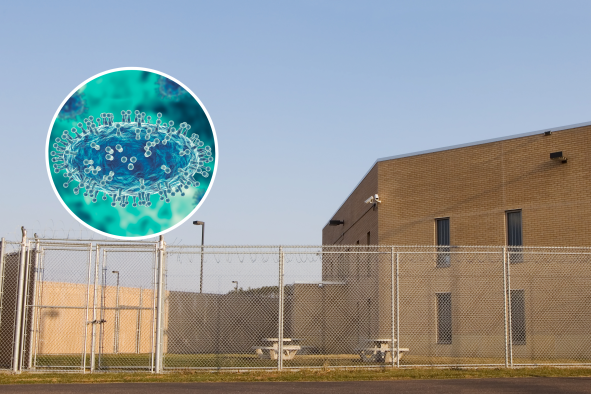Neuroscientists have identified a brain network that is nearly two times larger in the brains of people with depression.
By analyzing people's brains over an extended period rather than at a single time point, the researchers have new insights into the neurological underpinnings of the mental health disorder, with new potential targets for effective treatment.
"Depression is an episodic condition, meaning symptoms come and go over time," Charles Lynch, an associate professor of neuroscience at Weill Cornell Medicine and one of the study's co-authors, told Newsweek. "However, most brain imaging studies to date acquire a single brain scan at one point in time.
"A few years ago now, Conor [Liston, one of the study's other co-authors, and I reasoned that studying an individual with depression repeatedly over time would help us understand what brain signals or processes regulate these mood state transitions," Lynch said.
In their new study, published in the journal Nature, Lynch, Liston and their colleagues at Cornell used advanced neuroimaging techniques to study the brains of 141 individuals with a diagnosis of major depression and compared them to scans from 37 healthy control subjects. What they found was an unexpected enlargement in a group of brain regions, collectively known as the frontostriatal salience network, in those who suffered from depression.
Indeed, this region—which is thought to play a role in detecting and filtering out external stimuli—was nearly two times larger on average in participants with depression than those without. This difference appeared to be stable over time, regardless of mood and symptom fluctuations, and could be detected in children before the onset of depressive symptoms during adolescence.
So why might this expanded brain region increase our risk of developing depression? "There is a finite amount of space in the cortex [the outermost surface of the brain]," Lynch and Liston told Newsweek in an email. "The amount of space a particular brain area or network is allocated in the cortex is thought to be related at least in part to its usage or importance."
Given the fact that the salience network plays a role in determining the importance of different events, its expansion could lead us to focus our attention on the more negative information in our surroundings.
But what factors control the size of our salience network?
"It is known that functional brain network topology—size, shape, spatial locations—is controlled in part by intrinsic genetic programs, but also by environmental processes and our experiences," Lynch and Liston said.
"One of the follow-up experiments in our paper suggests that this salience network expansion is present in healthy children who go on to become depressed as teenagers, which is consistent with the idea that genetic factors that shape network development might be involved," they said.
However, they added that these findings do not rule out the possible contribution of early life experiences in driving brain expansion in these areas. "This is something we hope to investigate next," they said.
By improving our understanding of the neurological underpinnings of these disorders, the research team hopes to open up new avenues for future treatments and diagnostics.
"Knowing that an individual has an expanded salience network and might be at risk for becoming depressed could be useful information and might motivate efforts to prevent depression," Lynch and Liston said.
Reference
Lynch, C.J., Elbau, I.G., Ng, T., Ayaz, A., Zhu, S., Wolk, D., Manfredi, N., Johnson, M., Chang, M., Chou, J., Summerville, I., Ho, C., Lueckel, M., Bukhari, H., Buchanan, D., Victoria, L. W., Solomonov, N., Goldwaser, E., Moia, Stefano., Caballero-Gaudes, C., Downar, J., Vila-Rodriguez, F., Daskalakis, Z.J., Blumberger, D.M., Kay, K., Aloysi, A., Gordon, E.M., Bhati, M.T., Williams, N., Power, J.D., Zebley, B., Grosenick, L., Gunning, F.M., & Liston, C. (2024). Frontostriatal salience network expansion in individuals in depression. Nature, 632(8027). doi.org/10.1038/s41586-024-07805-2
Is there a health problem that's worrying you? Let us know via health@newsweek.com. We can ask experts for advice, and your story could be featured in Newsweek.
Disclaimer: The copyright of this article belongs to the original author. Reposting this article is solely for the purpose of information dissemination and does not constitute any investment advice. If there is any infringement, please contact us immediately. We will make corrections or deletions as necessary. Thank you.



